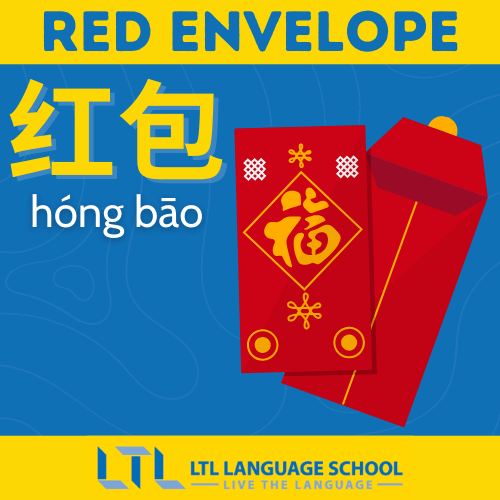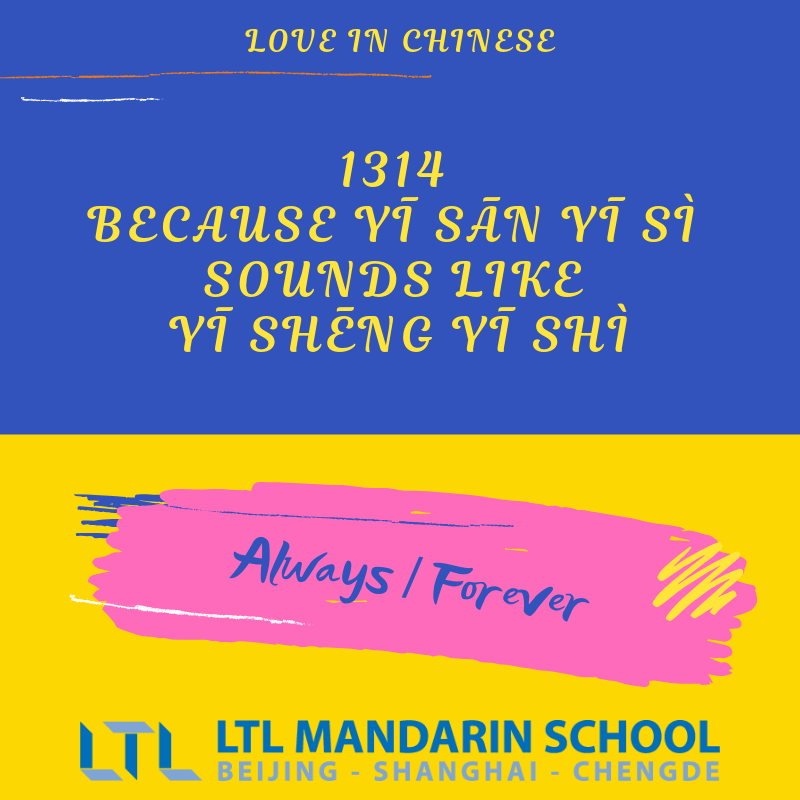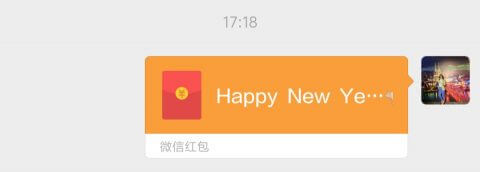The Best Things Come In a Big Red Envelope
What’s a Hongbao? Does it translate to Red Envelope? HELP
Don’t you worry, these questions, and many more, will be answered right here in today’s article all about the famous Chinese Red Envelope.
Red envelopes or 红包 hóng bāo in Chinese (红=red, 包 = envelope, packet), make a major appearance across China, especially when Chinese New Year is upon us!

Whether you are giving out or receiving a lucky red envelope this season, here is what you need to know about the traditional Chinese hongbao.
We’ll answer FAQ’s like:
👉 How much money should a 红包 contain?
👉 Who you should give a 红包 to?
👉 How to give digital 红包?
… and a whole lot more.
Click through to your preferred chapter, or kick back with a cuppa and read the whole article – you won’t regret it.
Hongbao || What is a Hongbao?
Hongbao || Who Gets a Hongbao?
Hongbao || How Much Money is Appropriate?
Hongbao || Origin of the Hongbao
Hongbao || What are Digital Hongbao?
Hongbao || Where can I Buy a Red Envelope?
What are Red Envelopes?
Red envelopes, 红包 (hóngbāo) in Chinese, are a popular gift people give during important festivals and celebrations in China and some other Asian countries.
Red envelopes can be given at weddings, graduations, birthdays or as a work bonus, but they’re especially widely seen during the Spring Festival (Chinese New Year).
What makes them so popular?
Their “lucky colour” and their contents are made of new and crisp bills!
Who Gets a Hongbao?

Traditionally, children and young adults receive red envelopes as a gift on Chinese New Year from their older relatives, friends of the family or neighbours.
Married couples can give hongbao to single people and older people can give them to younger people.
Some companies will give out hongbao to employees.
Once an adult starts earning money, he/she will be expected to give money not only to kids but also to parents and grandparents to show respect and a grateful heart.
The red colour stands for good fortune and prosperity for the new year and it is supposed to ward off evil spirits.
But even better: the envelopes are filled with cash.

How Much Money is Appropriate?

When filling the envelopes, there are some rules to consider.
Usually, new banknotes straight from the ATM are preferred. Giving worn notes or coins is considered bad style.
What amount of money per envelope is appropriate?
Now before going on, this tip is absolutely ESSENTIAL…
TOP TIP | All amounts with the number four in it should be avoided.
Four in Chinese 四 (sì) sounds similar to 死 (sǐ) which literally means death. Not an association you’d want to evoke on a holiday.
Multiples of eight, so 80, or 800 Yuan are good, since eight is traditionally lucky in China.

If you want to treat your significant other with a hongbao: lovers like to give 520 Yuan, because five, two, zero in Chinese sounds a bit like “wǒ ài nǐ” – “I love you”.
By the way: If you are on the receiving end of a red envelope, you are not supposed to open it right away.
Just accept the flat package with both hands and say thanks. A custom that applies to gifts in general.
At a wedding or a birthday party, for instance, the presents are not opened until after the party and without the guests present.
What’s the Origin of Hongbao?
It’s not completely clear where the tradition of giving red envelopes during holidays or special occasions comes from.
It might be connected to a custom dating back to the Qin-Dynasty (221 to 206 BC).
At that time, people used coins for payment and the elderly would thread these coins together with red string for good luck and protection from sickness and death.
The was called 壓祟錢 (yāsuì qián) “money warding off evil spirits“ (yāsuì = control evil spirits, qián = money).
Later, the yāsuì qián was replaced by red envelopes and its meaning was slightly changed with the homonym for 歲 (suì=old age).
Today, the money that is given as a gift in red envelopes is still referred to as yāsuì qián, meaning “money warding off old age“.

The Great Race 🐯 Ultimate Guide to Chinese Zodiacs
Have you ever wondered about the origin of the Chinese Zodiacs and how the animal were selected? Did you know there was a Chinese Zodiac Race? Who won it?
The Legend of the Red Envelopes
An alternative theory according to a legend is that, in ancient times, there was a fearsome demon called 祟 Suì (evil spirit).
This demon was totally black except for his hands, which were white.
Every year on New Year’s Eve, the demon would come to touch a sleeping child’s forehead three times.
In a state of shock, the child would burst into tears, then he would get a headache, fever, and start ranting.
When these symptoms disappeared, the child would become mentally retarded. In order to guard their children and keep away the demon, parents would keep their lights on and stay up the entire New Year’s Eve.
This could be the origin of modern-day “staying up on New Year’s Eve” tradition called 守岁 (shǒusuì), originally written as “守祟” “waiting for Sui.”, later replaced with the homophonic character “岁”(suì) “year”.

One New Year’s Eve, in Jiaxing, Jiangsu, there were two quite aged parents fearing that demon Sui would come to harm their son.
Therefore they gave him eight coins to wrap in red paper.
The child wrapped and unwrapped his coins again, and again until he was so tired that he fell asleep.
As red is the colour of luck, energy, and brightness in Chinese tradition, and it is also believed to protect against evil, the couple placed the eight coins beside their child’s pillow.
When everybody had fallen asleep, the demon appeared and walked toward the child’s bed, but when he extended his hand to touch the child’s forehead, rays of golden light burst out from the red packets.
Frightened by the lights, the demon and fled away.
This story spread through their village, and all the parents began to prepare their red packets – literally 红包 (hóngbāo) – to protect their children.

Lucky Numbers in Chinese 🔢AND Unlucky Numbers to Avoid
Upon coming to China it is useful to understand various things about Chinese Culture. It runs deep through the heart of China. Numbers are one of those things.
What About Digital Hongbao?
In China, in the last couple of years, digital money has pretty much taken over.
In everyday life, notes and coins seem to be a thing of the past. Instead, even the old grannys and grandpas use their phones to pay for a three-Yuan-Baozi and the hole in the wall mom-and-pop store has a QR-code for electronic payment.
So it was only a matter of time, before the culture of giving money in red envelopes made the transition to the digital age.
In 2014 WeChat launched digital red envelopes and shortly after, its rival Alipay made the same move.

Instead of being handed over in person, the digital red envelopes are sent via app from one smartphone to the other.
The money inside is credited to the recipients digital wallet when he or she opens it.
Since its introduction, every Chinese New Year a growing number of red envelopes is being sent.
For Chinese New Year 2018, Tencent (who developed WeChat) reported that 768 million people sent and received hongbao over the app during the six day holiday period.
Since it’s so easy, with just a flick the wrist you can grant your friends, coworkers and miscellaneous group chats with digital envelopes, it has become quite common to send out hongbao with just a few kuai to basically everybody in your contact list throughout the holidays.
It’s a way to just say hello and Happy New Year, and usually what goes around comes around, so it won’t really strain your budget in the end.
Whether it be physical red envelopes or digital ones – the tradition of giving red envelopes is very much alive and an essential part of the Chinese New Year celebrations.
Where Can I Buy Hongbao?
Hongbao are readily available online and a simple Google for “buy hongbao” or “buy red envelope” should yield the results you need.
Etsy is a good online option and includes some creative options.
However, unsurprisingly, Amazon has probably the biggest collection of results and come in a quite a good price.
Hongbao || A Summary
Keep in mind to only give hongbao to people who are younger than you.
When filling the red envelopes with money, avoid the number four and always use new banknotes.
Accept a red envelope with both hands and don’t immediately look inside.
Digital Hongbao, sent via WeChat, are a fun and common way to wish your friends and coworkers a Happy New Year.
Hongbao & Red Envelope – FAQ’s
What is a Hongbao or Red Envelope?
A Hong Bao in English means red envelope 红包 hóng bāo (红=red, 包=envelope, packet).
They are a popular gift given during Chinese festivals, especially during Chinese New Year.
Who gets given a Hongbao?
Traditionally, children and young adults receive red envelopes as a gift on Chinese New Year from their older relatives, friends of the family or neighbours.
Where can I buy Hongbao?
Hongbao are readily available online and a simple Google for “buy hongbao” or “buy red envelope” should yield the results you need.
Etsy is a good online option and includes some creative options.
However, unsurprisingly, Amazon has probably the biggest collection of results and come in a quite a good price.
If I give a Hong Bao with 40RMB in, is that bad?
Four is unlucky in Chinese culture so yes, avoid any number with a four in.
If I give a Hong Bao with 88RMB in, is that good?
Yes, eight is lucky in Chinese culture so this would be very well received.
Multiples of eight, so 80, or 800 Yuan are good also.
I am an adult. Will I receive a Hongbao?
Typically Hongbao are received by children, so you’d be expected to be giving rather than receiving.
However, for special occasions, like perhaps a birthday or a wedding, you would also be on the receiving end of a Hongbao!
Want more from LTL?
Want to learn Chinese from the comfort of your own home? Then our 24/7 online Chinese lessons might be the thing for you.
We offer a 7 day free trial to all new online students where you can study Mandarin 24/7.
Come and check it out free of charge and see what you think!
If you wish to hear more from LTL Language School why not join our mailing list?
















 Hi, my name is Manuel! I am from Spain and I am a Student Advisor at LTL. I’m now based at our Seoul School after living 3 years in Taipei.
Hi, my name is Manuel! I am from Spain and I am a Student Advisor at LTL. I’m now based at our Seoul School after living 3 years in Taipei. Hi, my name is Mojca! I am from Slovenia in Europe and I work as a student advisor at our Shanghai school.
Hi, my name is Mojca! I am from Slovenia in Europe and I work as a student advisor at our Shanghai school.





19 comments
[…] uses are purchasing groceries, paying bills, transferring money to friends, sending red envelopes and other everyday […]
Fascinating read, Chinese culture is incredibly deep
Thanks for the kind words! It sure is
[…] https://ltl-school.com/red-envelope/ […]
[…] might already have heard of some of these Chinese traditions such as red envelopes (红包 hóngbāo) which have become such a part of everyday life you can send them on WeChat Pay […]
[…] quite says Chinese New Year like a hong bao (红包 hóngbāo red packet). Children and parents prepare red packets for their loved ones. The […]
LOVE WECHAT RED PACKS!!
🧧🧧🧧🧧🧧
谢谢你!非常非常喜欢这个 本文
不用谢,我们非常非常喜欢你的评论!
[…] bitty event, which Tiffany’s mom is attending too. Grace brings the girls their birthday gifts, hóng bāo, and they begin opening the envelopes right in front of their grandma, which they’re not supposed […]
[…] can also send friends money, via “red packets”, and even […]
[…] LTL Team, The best things come in a big red envelope, January 2019, Available via: <https://ltl-school.com/red-envelope/> Last accessed: […]
[…] Red packets […]
[…] https://ltl-school.com/red-envelope/ […]
[…] https://ltl-school.com/red-envelope/ […]
[…] https://ltl-school.com/red-envelope/ […]
[…] https://ltl-school.com/red-envelope/ […]
[…] WeChat was the most popular HongBao sending tool, probably thanks to their unrivalled PR […]